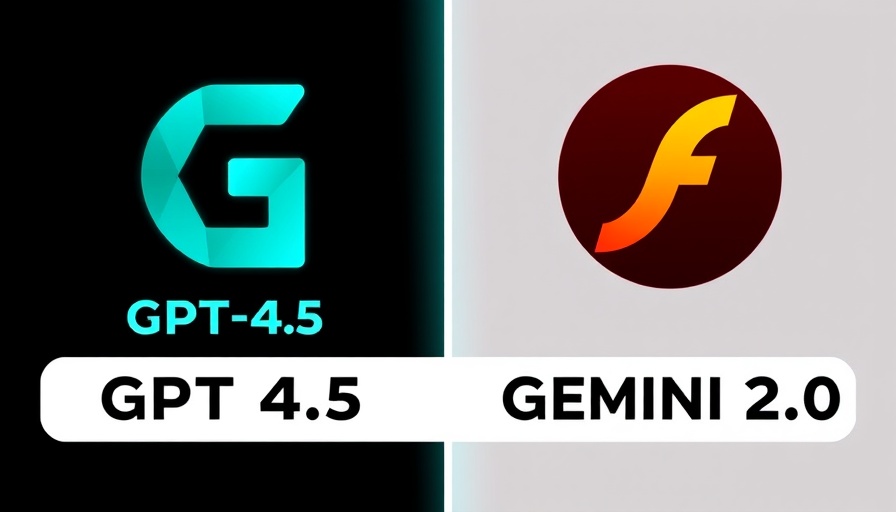
Understanding the Latest AI Showdown: GPT-4.5 vs Gemini 2.0 Flash
The competitive landscape of artificial intelligence has never been fiercer, with the release of GPT-4.5 from OpenAI generating considerable buzz. This latest iteration aims to improve emotional understanding and reduce hallucinations when generating text. However, as the race for AI dominance continues, it inevitably leads to comparisons—none more striking than between GPT-4.5 and Google’s Gemini 2.0 Flash. Both models introduce exciting features and capabilities that promise to enhance user experience, raise efficiency, and offer practical solutions to everyday challenges. In this article, we'll delve into a direct comparison of these two models based on a series of practical tests that illuminate their strengths and weaknesses.
The Testing Ground: Everyday AI Prompts
When exploring the capabilities of both AI models, I devised four relatable prompts aimed at gauging their practical performance. These scenarios reflect common real-world applications of AI technology. The first task involved planning a weekend getaway to the Catskills, which is an excellent test of creativity and local knowledge. GPT-4.5 provided a comprehensive itinerary with specific recommendations for hikes, dining options, and accommodation—a well-rounded and tailored response. Meanwhile, while Gemini 2.0 Flash offered decent suggestions, it lacked the personal touch in regards to accommodation details, advising only general towns rather than specific places. This experience reflects a broader theme: while both models possess the capability to provide information, the depth and personalization of that information can significantly differ.
The Humor Test: Engaging Users with Jokes
Another key area of testing was humor. I asked both AI chatbots to tell a joke about artificial intelligence. GPT-4.5 responded with a pun about an AI going to art school, highlighting its attempt to 'draw conclusions.' Gemini 2.0 Flash, on the other hand, delivered a joke about an AI breaking up with its chatbot girlfriend—both jokes aimed to elicit laughter without truly standing out. This exercise underlines an interesting aspect of AI development: the ability to engage users emotionally through humor remains a work in progress, yet both models met the task with comparable levels of success, affirming their ability to connect on a humorous front.
Efficiency in Translation Tasks
Translation is one of the most popular uses for AI chatbots, so I tasked both systems to translate the phrase 'Good morning' into French, Spanish, and Japanese. Notably, both performed in similar fashion, demonstrating that for straightforward translation tasks, both models are equally reliable. This consistency highlights the strength of both systems in handling basic linguistic tasks, suggesting that users can expect dependable performance across both platforms for everyday communication needs.
Weather Reporting: Meeting User Expectations
To further dissect the models' practicality, I posed a straightforward question about the current weather in Nyack, New York. Here, Gemini provided a simple forecast that only focused on the current weather, while GPT-4.5 offered an hourly breakdown with visual aids, including images representing the weather conditions alongside textual descriptions. This disparity illustrates the enhanced user experience brought by GPT-4.5 in scenarios where detailed and timely information is crucial. In a world increasingly reliant on up-to-date information, it could be argued that GPT-4.5's method provided a more enriching user engagement.
Conclusion: An Equally Matched Pair
After analyzing the outcomes of these tests, asserting that one AI is definitively better than the other becomes a complex endeavor. While GPT-4.5 demonstrated strengths in weather reporting and personalized responses, Gemini 2.0 Flash held its ground with consistent performance across tasks. In conclusion, potential users could consider individual requirements when selecting an AI, understanding that while they may vary in light of specific tasks, both models are designed to assist with everyday queries and creative endeavors alike.
AI enthusiasts should dive deeper into these technologies, exploring their implications and potential to transform various industries. The future of AI is unfolding rapidly, and staying engaged with these developments will empower users to harness their capabilities more effectively.
 Add Row
Add Row  Add
Add 




 Add Row
Add Row  Add
Add 

Write A Comment